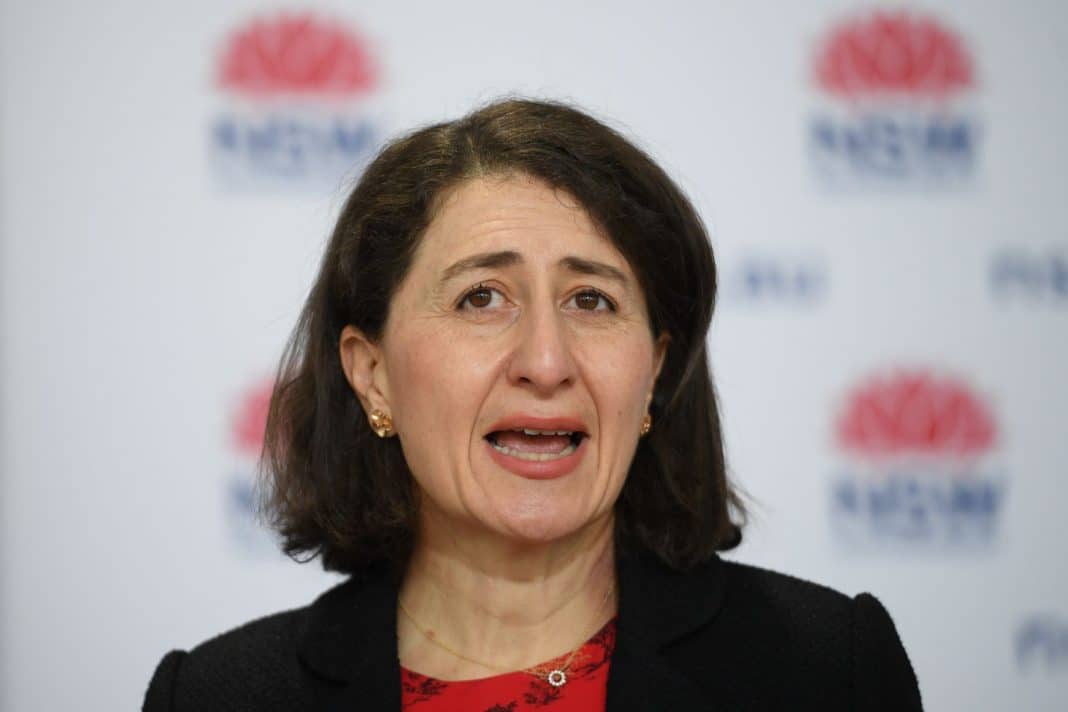NSW has reported 1164 new locally-acquired cases of COVID-19 and three deaths, including a woman in her 50s, as the entire state remains locked down.
Police are cracking down on lockdown compliance as authorities battle to contain the spread of the virulent Delta strain.
The three deaths recorded in the 24 hours to 8pm on Monday include the woman in her 50s from southwest Sydney, a man in his 80s from Sydney and a man in his 90s from southwest Sydney.
It takes the toll for the current outbreak to 96, and to 152 for the entire pandemic.
There are 871 patients in hospital NSW, with 143 in intensive care and 58 ventilated.
It comes as NSW surpasses two-thirds first-dose vaccination coverage for eligible residents. The government will restore freedoms to the fully-vaccinated at 70 per cent double-dose coverage.
“Being the last day of winter, I can safely say that we’re looking forward to a better spring,” Premier Gladys Berejiklian told reporters.
“We want to get to the magic 70 and 80 per cent as quickly as possible.”
Meanwhile, five COVID-positive men have each been fined $5000 after NSW Police found them unmasked and mingling outside in Sydney’s southwest.
A Dubbo man on Monday became the first Aboriginal person in Australia to die while infected with COVID-19, prompting an urgent plea for Indigenous communities in western NSW to get vaccinated.
While there has been a jump in the number of vaccines administered to the region’s Indigenous residents – it has almost doubled in the past three weeks – the rate still lags behind the region’s broader population.
Just 6.3 per cent of Indigenous people western NSW are fully vaccinated, compared with 26 per cent of the general population.
The majority of cases – 65 per cent – have been diagnosed among people of Aboriginal descent.
Federal Labor’s Linda Burney says what is unfolding in Indigenous communities in western and far western NSW is a “disaster” with 70 people already infected in the Wilcannia community of 750.
NSW health authorities have warned October is likely to be the worst month for the state’s health system due to an accumulation of infections from the preceding weeks.
While NSW has a surge capacity of about 2000 intensive care beds and an equivalent number of ventilators, health unions are concerned the quality of patient care in such a scenario would be greatly diluted.
AAP



